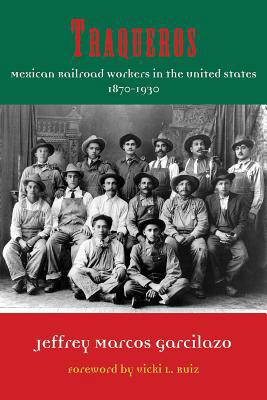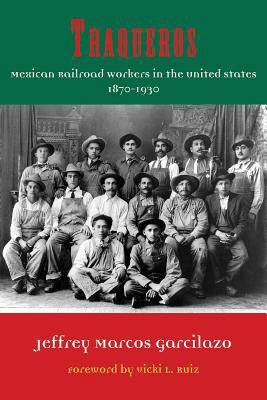
- Retrait gratuit dans votre magasin Club
- 7.000.000 titres dans notre catalogue
- Payer en toute sécurité
- Toujours un magasin près de chez vous
- Retrait gratuit dans votre magasin Club
- 7.000.000 titres dans notre catalogue
- Payer en toute sécurité
- Toujours un magasin près de chez vous
Traqueros
Mexican Railroad Workers in the United States, 1870-1930 Volume 6
Jeffrey Marcos GarcilazoDescription
Perhaps no other industrial technology changed the course of Mexican history in the United States--and Mexico--than did the coming of the railroads. Tens of thousands of Mexicans worked for the railroads in the United States, especially in the Southwest and Midwest. Construction crews soon became railroad workers proper, along with maintenance crews later. Extensive Mexican American settlements appeared throughout the lower and upper Midwest as the result of the railroad. The substantial Mexican American populations in these regions today are largely attributable to 19th- and 20th-century railroad work. Only agricultural work surpassed railroad work in terms of employment of Mexicans.
The full history of Mexican American railroad labor and settlement in the United States had not been told, however, until Jeffrey Marcos Garcílazo's groundbreaking research in Traqueros. Garcílazo mined numerous archives and other sources to provide the first and only comprehensive history of Mexican railroad workers across the United States, with particular attention to the Midwest. He first explores the origins and process of Mexican labor recruitment and immigration and then describes the areas of work performed. He reconstructs the workers' daily lives and explores not only what the workers did on the job but also what they did at home and how they accommodated and/or resisted Americanization. Boxcar communities, strike organizations, and "traquero culture" finally receive historical acknowledgment. Integral to his study is the importance of family settlement in shaping working class communities and consciousness throughout the Midwest.
Spécifications
Parties prenantes
- Auteur(s) :
- Editeur:
Contenu
- Nombre de pages :
- 246
- Langue:
- Anglais
- Collection :
- Tome:
- n° 6
Caractéristiques
- EAN:
- 9781574416275
- Date de parution :
- 16-02-16
- Format:
- Livre broché
- Format numérique:
- Trade paperback (VS)
- Dimensions :
- 150 mm x 226 mm
- Poids :
- 340 g







